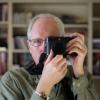Workflow examples
-
Recently Browsing 0 members
- No registered users viewing this page.
-
Similar Content
-
- 18 replies
- 1,515 views
-
- 691 replies
- 195,754 views
-
- 1 reply
- 274 views
-
- 10,972 replies
- 1,200,501 views
-
- 3 replies
- 383 views
-


Recommended Posts
Join the conversation
You can post now and register later. If you have an account, sign in now to post with your account.
Note: Your post will require moderator approval before it will be visible.